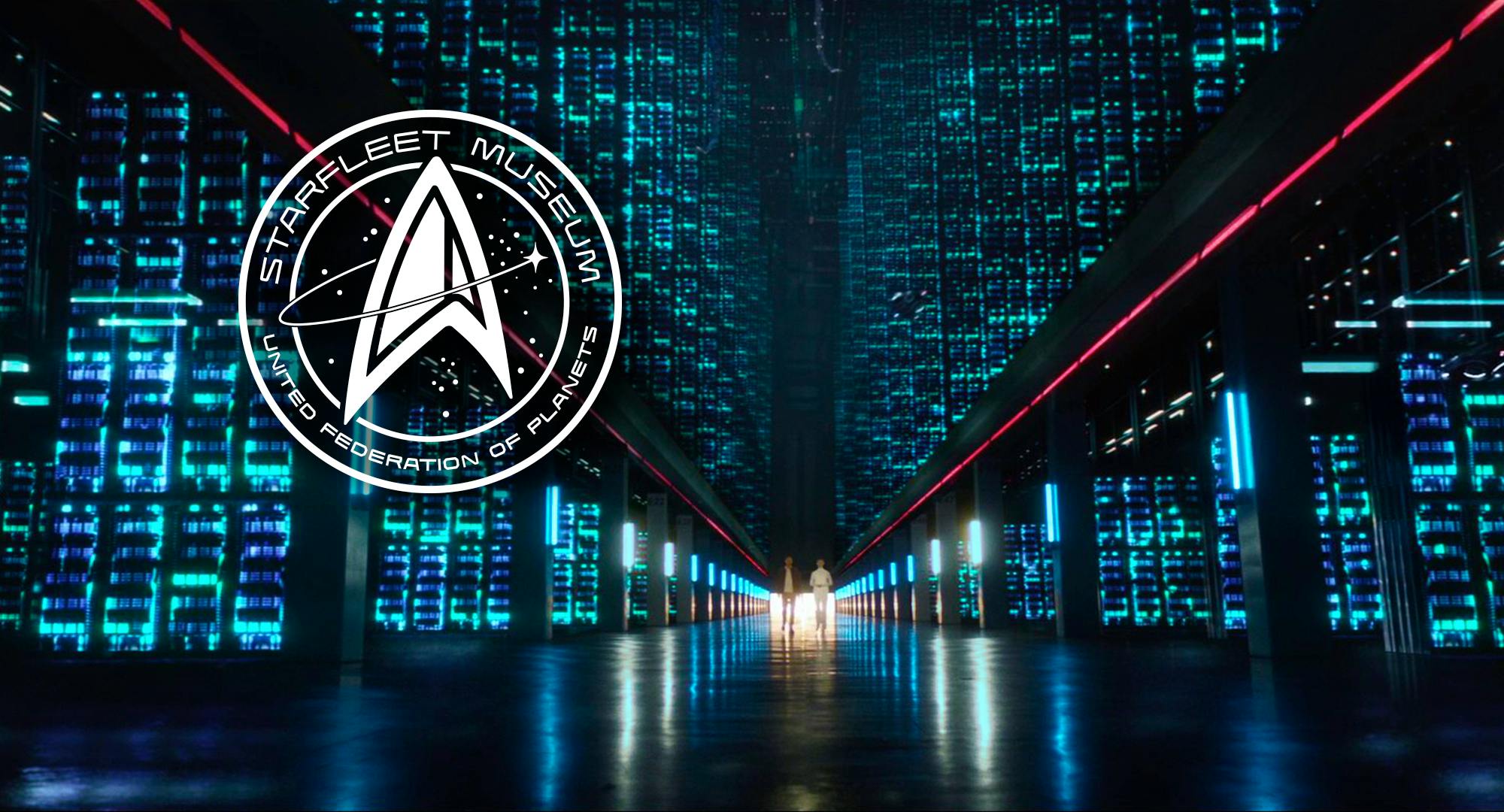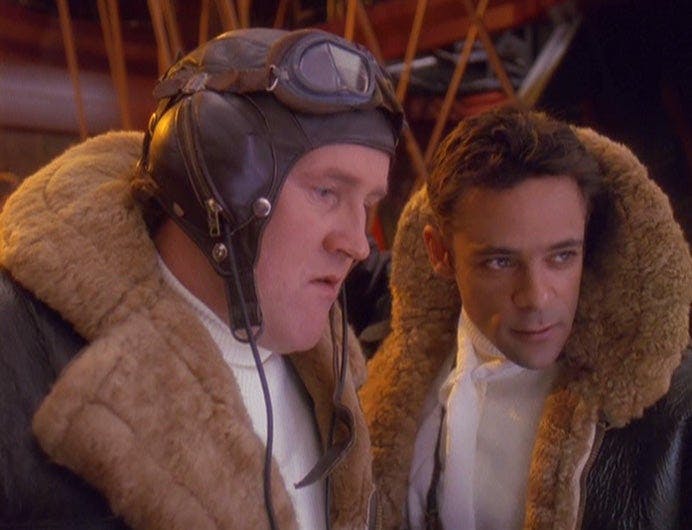Published May 11, 2020
Connecting the Galaxy With Its Past
How museums in the 24th century might continue to educate, inform, and inspire.

StarTrek.com
Congoers at San Diego Comic Con and Star Trek Las Vegas last summer got to experience a taste of the Starfleet Museum with the exhibit Jean-Luc Picard: The First Duty. As someone who works in a museum, I was delighted to see this glimpse at the future of my profession. It was a privilege to see props and costumes presented with the same care as the historical artifacts I handle every day. The exhibit allowed fans to connect to one of our favorite Starfleet captains in a very tangible way by actually seeing landmark objects like Picard’s Ressikan flute, his family album, and a Tamarian knife.
People in the 24th century still value a connection with the past and nothing creates a stronger connection than real objects and real places. As an archaeologist, Picard has collected a variety of ancient artifacts. In Star Trek: First Contact, he is enraptured by Zefram Cochrane’s Phoenix. While Picard had seen the historic ship many times in the Smithsonian, he had never before been allowed to touch its hull. He explains Commander Data that “for humans touch can connect you to an object in a very personal way – make it seem more real.”
24th century museums still won’t let visitors lay hands on objects, but technology may enable closer interactions than ever before. Today’s museums use reproductions to create hands-on experiences allowing visitors a taste of the connection Picard describes, but accuracy is limited by budget. Replicators could be used to create exact copies of museum collections for people to interact with in a variety of ways without risking damage to the original object. This may not be quite as satisfying as touching the actual Phoenix, but being able to manhandle an exact replica while viewing the original object comes pretty close.

StarTrek.com
The scale and scope of Jean-Luc Picard: The First Duty was limited by our 21st century technology. To travel from California to Las Vegas, objects had to be crated up, loaded onto a truck, and then carefully unpacked for display. I’ve helped install traveling exhibits and seen what damage can happen just shipping them across the US – imagine transporting objects across the galaxy! Replicators could help here, too. Instead of sending irreplaceable artifacts on a long trek across the quadrant, museums could send data files over subspace containing replicator patterns for entire exhibits. This could cut down transit time, protect valuable collections, and allow the same exhibit to open simultaneously in places around the Federation.
Now more than ever, museums are extending their digital footprints with virtual tours and interactive online exhibits that allow them to reach patrons around the world. Imagine having the ability to reach across the galaxy. Holoprograms could allow private tours of special exhibits, historic sites, or entire museums. They could include a range of tour guide options (language, topic, audience age, length of visit, etc.) to make every visit customizable or allow an option for independent exploration. I would be surprised if Keiko O’Brien didn’t take her class on Deep Space Nine on regular holographic field trips. We’ve certainly seen how much her husband enjoyed using the holodeck to relive history – how many times did Chief O’Brien and Doctor Bashir fight the Battle of Britain? Historical holographic reenactments, when based on scholarly research, are another offering that museums might provide. Combined with the ability to replicate historical garments, these immersive experiences could provide insights that 21st century living history would find difficult to beat.

StarTrek.com
“These are our stories. It is important for a warrior to learn how to interpret them properly.” – Alexander Rozhenko, Star Trek: The Next Generation Season 7, Episode 21 “First Born”
In the world of Star Trek, humans aren’t the only ones trying to connect with the past. According to the Hidden Universe Travel Guides: Star Trek: The Klingon Empire, visitors to Klingon space can enjoy a number of museums celebrating Klingon history. The way a society connects to the past reflects their values and Klingons are no different. Faith guides their interpretation of history with the intent of Klingon traditions. Nowhere is this more evident than at the Kahless Historical Museum on Qo’noS, where visitors learn about Kahless the Unforgettable through exhibits of artifacts from his life. Other museums, almost all of which focus on martial prowess, place emphasis on real objects over technological marvels. These institutions serve to ground both Klingon faith and Klingon history in the physical world.
Logically, Vulcans place an overwhelming emphasis on historical fact. As described in the Hidden Universe Travel Guides: Star Trek: Vulcan, their museums house an overwhelming accumulation of objects and use holograms to supplement immersive exhibits. The Vulcans also make use of living history. The Kir Historic District and Living History Museum is Vulcan’s answer to America’s Colonial Williamsburg, featuring costumed interpreters engaged in demonstrations of everyday life and street performers that include stand-up philosophers. They even use living history to explore darker periods of their past – the Veklar Prison Museum engages visitors with reenactments so graphic they come with a warning label. Vulcan museums allow visitors to relive the past using objects, technology, and interactive storytelling.
Star Trek: Picard Opens Up a New Chapter
The first episode of Star Trek: Picard gave viewers a first look at a human museum in the 24th century as Picard visits his personal collection at the Starfleet Museum Quantum Archives. He retrieves an object from stasis in a storage facility that would be the envy of any curator. Clearly, our future colleagues no longer need to concern themselves with the environmental agents of deterioration we face today. That’s probably for the best, because I imagine keeping up with an entire galaxy’s worth of history is a full time job. After all, someone has to update the Smithsonian’s exhibits after the return of the U.S.S. Voyager from the Delta Quadrant to include new discoveries about Amelia Earhart and dinosaurs. Galactic history isn’t going to tell itself!
Annie Muirhead (she/her) is a Public Historian and lifelong Trekkie. She works at a historic house museum where she gets to touch objects every day (wearing gloves when appropriate, of course). Follow her on Twitter, @LariaHoD.
Star Trek: Picard streams on Paramount+ in the United States, in Canada on Bell Media’s CTV Sci-Fi Channel and OTT service Crave, and on Amazon Prime Video in more than 200 countries and territories.
